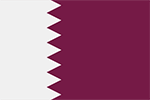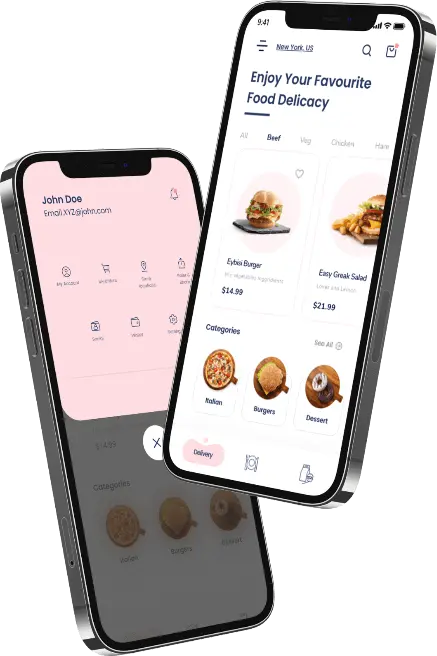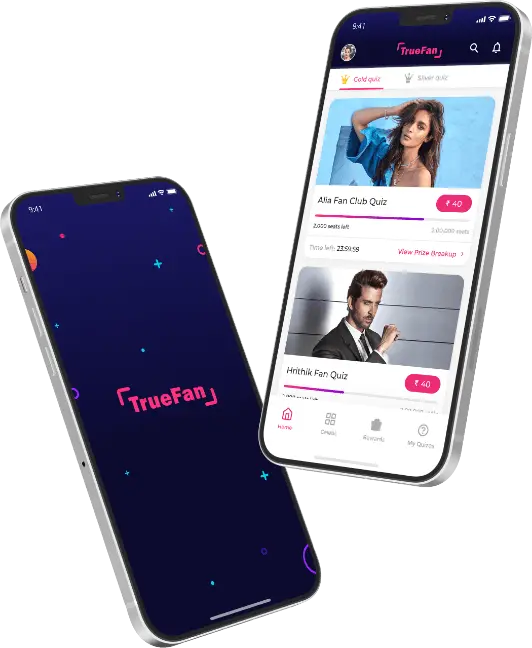10 Jan 2023
Updated on January 18th, 2023
How to Create a Telemedicine App in 2023?
Surbhi Bhatia

Healthcare is one of the most conservative industries and is not open to new ideas. Over the past few years, however, we all have reimagined how care is delivered and jumped headfirst into technology-enabled services.
Digital healthcare was made possible by the widespread adoption of tools and technologies that allow the virtual delivery of healthcare services. As a result, Telemedicine mobile applications development has seen a rise in acceptance. However, this concept was previously not well received by providers and consumers.
Regulatory changes, tangible investments, and the pandemic have driven the rise in telemedicine.
While the necessity can explain the spike in telemedicine apps during the pandemic, does telehealth have a chance to survive in the post-pandemic world? These statistics are encouraging.
- At a 32.1% CAGR, the global telemedicine market will grow from $90 Billion in 2021 to $636 billion by 2028.
- 84% of medical professionals offered virtual visits in April 2021. 57% of doctors would like to provide telemedicine software.
- Around 50% believe that by 2040, at least 25% of all outpatient, long-term, and well-being care could be delivered via virtual delivery.
- Over 38% of US patients received virtual care in 2022. 76% of virtual-care recipients prefer to use telemedicine apps.
- Amwell, a top doctor-on-demand platform, saw telehealth visits increase to 1.8 million in 2022, with total revenue of $64.5 million.
- In 2021, digital health apps grew to more than 350,000 apps.
What is the secret to the phenomenal growth in the healthcare market? But COVID isn’t the only reason. These are the top reasons virtual care is so popular:
- Rapidly growing penetration of smartphones.
Global smartphone usage surpassed 6.6 Billion in 2022. This means that 83% of the world’s population has a smartphone.
- Healthcare professionals are in short supply
The global healthcare labor gap will grow to 13,000,000 by 2035 from the current 7 million.
- Technological innovation.
The global healthcare IT market stood at around $282 Billion in 2021 and is projected to drop to $857 billion by 2030.
- Rural areas lack qualified doctors
The AAMC states that 20% of Americans live outside of cities, with a one-to-2,500 ratio of doctors to patients. Therefore, approximately 60 million people don’t have access to regular healthcare.
- An increase in chronic diseases
133,000,000 Americans are affected by chronic diseases, which is more than 40% of the country’s population.
What is Telemedicine App?
Imagine a world where you can remotely do your health checkup, get your blood pressure, and take it. The doctor will then decide what medication you need and whether you need to visit the hospital for further tests. Healthcare startups are developing telemedicine apps to make this a reality.
Telemedicine’s main purpose is to provide affordable healthcare services to all people everywhere. These are the top healthcare services that telemedicine app developers provide:
- Video calls and online chats with doctors
- Minor health conditions can be assessed and treated.
- Access to therapy and other mental health services
- Renew or request prescriptions for medication;
- Keep an eye on your physical health.
Also Read – Healthcare Chatbots: Promising a Patient Care Industry Transformation or a Failure?
Telemedicine Startups: Why are they the best choice right now?
Telemedicine startup founders in America are in great shape right now. As a result, the market trends offer a great opportunity to invest.
Two factors are driving the popularity of telemedicine apps.
Factor 1: The Pandemic
- The COVID pandemic caused a 100-fold increase in telemedicine users, both patients and professionals.
- Statista reports that 60-75 percent of US adults would use the telemedicine app every day.
- 70% of user experience have with the TM services. These users intend to continue using them in the future.
Technology becomes routine, and new products are inevitable. There is always room to create a new product in a growing market.
A telemedicine app can change behavior patterns in response to pandemics.
Factor 2: Venture Investment Boom
- By 2026, telemedicine Recent research shows that 83% of healthcare organizations plan to invest in Telehealth. 84% of respondents believe they can extend their reach and cover additional areas.
These statistics show a boom in the development process of telemedicine applications. Venture capital investment is the key to every boom.
This market is booming because of behavioral shifts and huge investment potential.
We hope that you will agree with the statistics and not just trust your instincts. However, both are excellent complements when it comes to assessing the potential value of your startup.
Let’s discuss it more.
Also Read – How Much Does It Cost To Develop A Healthcare Mobile App?
There are many types of telemedicine applications you should consider
You might be surprised at how many telemedicine apps are available if you are just starting to develop telemedicine software. Many app types are available, from mental health platforms to chronic condition monitoring apps.
These are the three most important telemedicine apps to watch in 2023.
1. Digital Therapy
Digital therapy’s potential to transform care delivery makes it so attractive. A report shows that the market for digital therapeutics will reach $13.1 billion by 2026. This is an increase of $3.4 billion from 2021.
Patients can now reduce the time and cost of procedures that used to take hours and wait times by using apps and wearable devices. In addition, digital therapy apps can increase the data range of patients and allow for more effective treatment. As a result, both investors and healthcare providers are interested in digital therapeutics.
2. Remote Monitoring
Remote monitoring is all about patients’ convenience and enhances user experience. Telemedicine apps can help patients access to care from outside hospitals. However, there is a deeper clinical and economic reason.
Remote monitoring apps provide data that can be used for clinical research and to improve treatment development. This data can also be used to better understand a patient’s history and determine who is at the highest risk.
3. Chronic DiseasesTreatment
Access to care is the main benefit of telemedicine apps. Telemedicine apps are easy to use, reducing travel time, weather, and other mobility barriers. In addition, recent research has shown that frequent phone contact can improve treatment outcomes, especially in low socioeconomic/vulnerable areas.
Also Read – Cloud Computing in Healthcare: The Transformation of World Healthcare System
List of Telemedicine App Benefits for Patients
Recent surveys have shown that 41% of Americans use telehealth. This is due to the fact that they can speak with any provider from their home via video chats or calls, allowing them to be in touch with their chosen providers. Telemedicine is essential to survive in the current crisis.
Let’s now take a look at some of the other benefits that attract patients.
- Improved Accessibility to Healthcare – Today’s telemedicine apps have removed barriers for patients and providers. Telehealth is now more accessible than ever because it can be used remotely to perform surgery.
- This telemedicine app for doctors reduces the cost of medical services – This is a far more economical option than regular care with in-person doctor visits. The patient appreciates it, as many healthcare providers offer telehealth packages during this epidemic. This makes the app more affordable for patients.
- Healthcare: A study has shown that nearly 60% of patients don’t expect to stay with their doctor over the long term. The patient uses continuous health monitoring devices to monitor their health, which reduces the doctor’s requirement for a regular check-up.
- Best Prevention -Today, healthcare primarily focuses on treating patients based on their medical condition. Telemedicine apps allow patients to be monitored remotely based on their current health condition and can educate them accordingly.
List of Telemedicine App Benefits for Doctor
There are many benefits for doctors regarding the use and features of telemedicine apps.
- High-end Security – This is mainly in the healthcare sector but hasn’t been a high priority. The new technology in telemedicine apps now focuses mainly on high-end security to safeguard patient data such as images and medical records.
- Flexibility for healthcare staff – There is no set time for doctors to work. Doctors still spend about 30% of their time caring for patients. The remaining 40-50 hours per week are spent on hospital administration and document tasks. The technology has mostly benefited doctors working outside a traditional hospital setting. It includes automatic billing, call recording, transcription, and eRx. This allows them to concentrate on their treatment.
- Easy Access to Patients – The telemedicine app has made it easier for remote patients to access the service.
Also Read – Doctor On Demand App Development: Tech Stack, Cost, Features, Etc.
Trending Technologies for Telehealth App Development
Once you have defined your target audience and niche, it is time to start thinking about the telemedicine app advanced and basic features used with your product. You can’t release a simple app when the best development teams are using the most recent developments.
What are the most popular technologies for building a telemedicine platform?
1. Machine Learning (ML), Artificial Intelligence (AI)
Artificial Intelligence is a key component of modern business and the modern world. It is now a part of almost every aspect of our lives, including telemedicine.
Take a look at how useful AI/ML-based technology can be.
- AI/ML apps can help you create personalized care plans using your existing knowledge.
- AI-based chatbots can reduce the time it takes for patients to get their treatment and solve the fundamental problems of a greater number of people.
- AI/ML products can collect anonymized data from millions of people and then process it so doctors can better treat diseases.
- AI/ML products can diagnose patients faster and more accurately based on collected data.
- Potential diseases can be prevented by using the data collected and processed.
The US Food and Drug Administration has approved 64 AI/ML medical devices and algorithms. For example, EyeArt uses an AI-based device to diagnose eye disease. This FDA-approved algorithm is an example. The algorithm analyzes the retina photos and determines if there are signs of diabetic eye disease.
2. Internet of Medical Things
The Internet of Medical Things (IoMT) was born from the win-win combination of IoT, telemedicine, and IoT. This uses medical devices such as EKG monitors and mobile apps to track health conditions.
IoMT devices include medical devices, wearables, remote patient monitoring, and a medication-tracking system. This allows for a better diagnosis, more complete health data, and better care.
A great example of connected care that uses virtual monitoring is the remote cancer monitoring system ( CyCORE). A focus group of patients with head and neck cancer used a Bluetooth-enabled scale and blood pressure monitor and tracked their symptoms via the app. The doctors received the data and corrected the treatment plan each day. This made the process easier for both patients and doctors.
COVID-19 has made IoMT more important, as it highlighted the importance of remote monitoring. Unsurprisingly, the global IoMT market will grow from $71.84 million in 2020 to more than $446.50 trillion in 2028.
3. Extended Reality
Another trend innovation is XR. It encompasses Augmented Reality, Mixed Reality (MR), Virtual Reality (VR), and Mixed Reality (MR). These technologies have also influenced the development of telemedicine apps, making XR more immersive.
Clinics use VR to offer remote healthcare. In addition, many fully XR clinics, such as XRHealth, are available. VR can treat pain, stress, various injuries, and other symptoms. It can also help patients with COVID-19-related respiratory problems.
Combining Augmented Reality and Artificial Intelligence can be extremely effective in monitoring and treating pandemics when it is critical to reducing the number of in-person contacts. Patients and medical personnel can use XR sets to avoid contact in person. In addition, AI-based products allow constant access to patient health indicators and alerts when something is wrong.
XR also offers more options for remote care and education. AR glasses can provide surgeons and doctors with vital guidance during various procedures, surgeries, or exams. This technology can be used by doctors to view holographic images of patients or to facilitate a complete body scan to identify ailments.
4. Blockchain
Virtual care involves a constant online exchange between patients and doctors of electronic health records. Naturally, this increases the risk of data breaches. Blockchain is here to help.
Blockchain is a decentralized, anonymous, and mutually agreed-upon interaction between parties. It gives physicians access to the complete medical history of their patients. In addition, physicians can store additional medical records and information in encrypted, fragmented systems.
Both parties must validate each transaction to reduce the chances of incorrect claims being allowed into the system. As a result, false claims and insurance fraud cases are significantly reduced.
Blockchain technology is not very popular despite its apparent efficiency. This can be explained easily by the high cost, the need for high-level knowledge, standardization, and the lack of regulation.
Telemedicine App: The Best Features & Functionality
Telemedicine is different from every other wellness app. It has some unique features that make it stand out in healthcare.
Let’s take a look at some of the key features of the telemedicine app
1. User profile
A user profile contains information about the user, such as their picture, gender, education, and location. After these details are obtained, a user profile is created. The patient’s medical history will also be kept.
2. Patient web panel
This feature will usually include all details about the doctor and their specialties and the patient’s complete medical information. If a patient has a question about a doctor, they can contact their preferred doctors to discuss the matter and proceed with the treatment. The panel can also provide information to the doctor if they need it.
3. Tracking location
It is extremely useful to locate the user’s exact location so they can find nearby pharmacies or hospitals. They can also get directions and set arrival times.
4. Variety in Communication
The best communication is key to the best treatment. This feature allows patients to communicate via the instant chat option and in-app calling with their doctor. Live video call sessions are also possible. These features allow the patient to share audio files, video, images, and screen sharing.
5. Electronic Medical Records (EMR).
Integration of EMR into a telemedicine app can give the user a flexible workflow, access to all services, and the ability to use the entire software. In addition, EMR can help with security issues.
6. Remote patient monitoring (RPM)
Both patient and doctor benefit from RPM. This includes maintaining pregnancy records, guiding the maternity program, or managing chronic conditions.
7. Simple symptoms checker
A patient can take note of all their symptoms to help them identify their current health status. Patients can then communicate with their doctor using this information.
8. Variety in payment methods
Everybody prefers different payment methods. This includes coupons, employer coverage, credit cards, and insurance plans (Medicare and Medicaid). This allows the user to choose one of these options to pay.
9. Scheduling an appointment
It is the best thing anyone can do. This feature allows patients to schedule appointments with their doctor at any time without having to travel. They can also sit in their own home and receive a consultation from the doctor.
Important Things to Consider When Creating a Telemedicine App
You must have a clear understanding of the basic blueprint before you begin to create a telemedicine app. These are the key elements.
1. Perform a Business Analysis
This stage defines your target market. Business analysis can reveal the problems of your target audience and show you how your mobile app can solve them. The industry will dictate the way your app is developed and implemented.
2. Do market research with your competitors
Market research can help you identify the market leaders in telemedicine and potential competitors. In addition, you can gain detailed information about the application by conducting a thorough analysis of its strengths, weaknesses, ratings, user reviews, and other data. This can give you a better understanding of your app.
3. Prepare a plan for your app infrastructure
It’s now time to start planning your telemedicine app infrastructure. You can easily determine the requirements for your application by analyzing the pain points of your target audience. This strategy will help you budget for telehealth software development.
4. UX/UI Design that is user-friendly
Both UX/UI designs are essential before you start developing your application. The patient wants an interface that is simple to use and understand while connecting with their doctor. A smart telemedicine app will make booking appointments and payments easier.
5. Project Management
Any app development project requires that the task be completed under the supervision of a project manager. These are the components of the development stage:
– Early planning involves organizing development, team formation, and setting deadlines.
– Development refers to the coding phase. Every project is carefully noted at every stage after the delivery of core features.
– The telemedicine application’s quality assurance and UAT testing ensure that it is functional and reliable.
6. Optimize Marketing Channels
Once the telemedicine app is developed, it is time to launch it on the market. The application will need to be updated and maintained from time to time, even after it is completed. This must be done right from the beginning. To enhance your telemedicine application, you can use user reviews.
The basic elements to create a successful consultation app are, however, the most important. Unfortunately, finding the right API and SDK providers for your app is one of the most difficult tasks.
When choosing, you should be clear about certain questions:
- What’s their market experience?
- What are their special features and uniqueness?
- What is the cost of telehealth implementation?
- Will they know the importance of HIPAA-compliant app healthcare?
- How secure and scalable are they?
Telemedicine Apps: Examples of Monetization
Two monetization models are most effective for telemedicine apps:
Subscription
The app is available for a monthly or annual app purchases. Subscriptions are an excellent way to attract users because they allow you to pay once in a while rather than every week. In addition, investors are more likely to prefer products that have a subscription model, as it gives them a better understanding of the ROI.
In-App Ads
In-app advertising is a very popular monetizing strategy for free telemedicine apps. This partnership approach is low-profit and requires a lot of attention from the business you are partnering with. They must be relevant to your audience, trustworthy, and reliable.
Summary
Telemedicine is changing the future. Anyone who wishes to get into it must be aware of its rapid growth. The best way to stay competitive is to have a flawless business idea and use the most recent technologies, create innovative solutions, and be committed to customer service.
We have shown you how Techugo builds a functional and comparable telemedicine app. We can always help you and provide a secure and user-friendly telemedicine app development solution. Get in touch to discuss your requirements with Techugo.
Get in touch.
Write Us
sales@techugo.comOr fill this form



 SA
SA  KW
KW  IE
IE AU
AU UAE
UAE UK
UK USA
USA  CA
CA DE
DE  QA
QA ZA
ZA  BH
BH NL
NL  MU
MU FR
FR 













